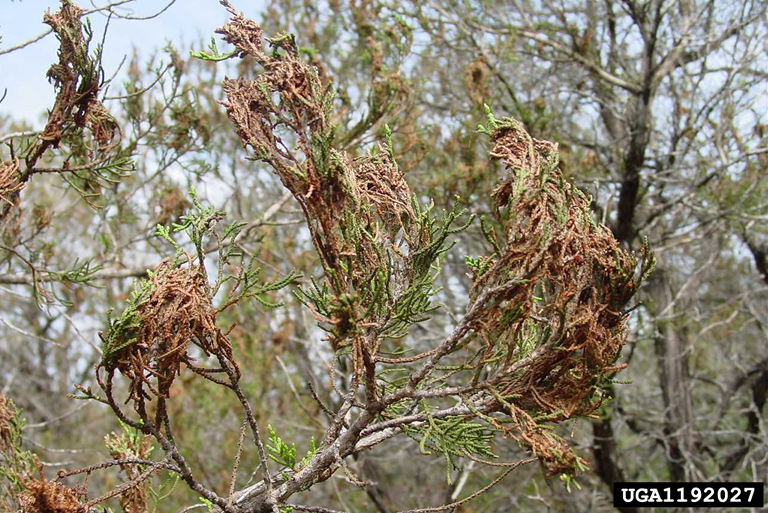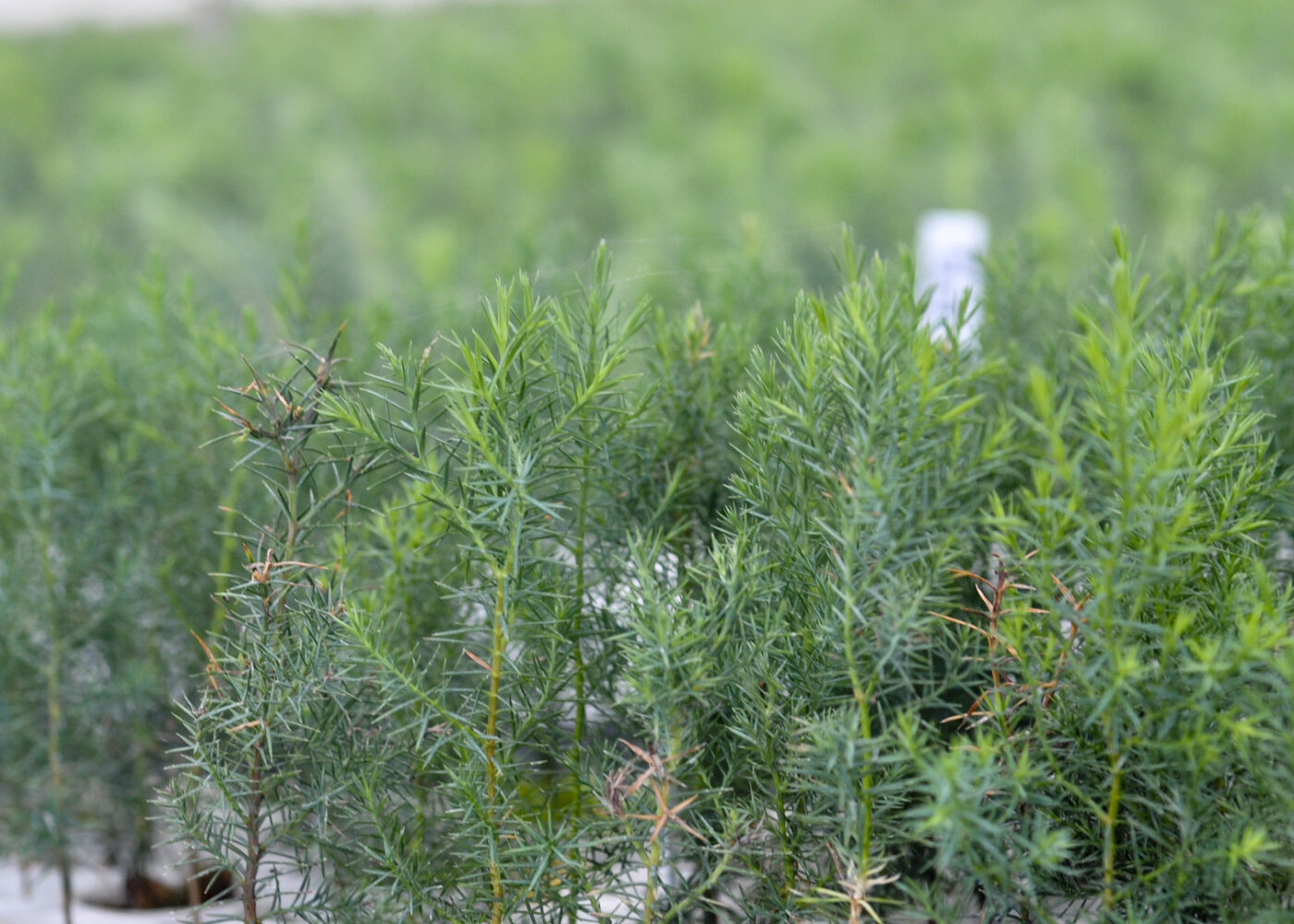Juniper budworms are native insects that have had recent outbreaks in Central Texas. The small, green larvae attack the tips of Ashe juniper, also known as cedar trees, webbing the foliage together, which then turns red or brown.
The juniper budworm was first described by A. R. Grote in 1873 from a specimen collected in Texas and is known to occur in Kansas and throughout the southwestern U.S.
Lifecycle
The juniper budworm larva goes through eight to 11 instars, or caterpillar stages, as it grows. It then changes to a pupa from which the adult moth emerges. Life history studies in Kansas report one generation per year, but records at Texas A&M University suggest two generations per year in Texas.
Larvae feed on juniper foliage, construct silken tubes, and pupate in their feeding shelters. Adult moths appear shortly after pupation.
In Kansas, larvae overwinter in juniper trees, pupate in late June and July, and emerge as adult moths in July. In Texas, juniper budworm overwinter in the egg stage or very young larvae.
Adult moths are about ¼-inch long, with a mottled tan and brown color pattern on their wings. Similar to dead Ashe juniper foliage. They are primarily nocturnal and attracted to lights, generally resting on host plants during the day and only flying when disturbed, making them difficult to detect.
Impact
The exact impact of the juniper webworm on Ashe juniper in Central Texas is unknown, including whether defoliation will cause juniper mortality or if a second generation of larvae will cause additional damage.

Control
In rural areas, control is not recommended or feasible. Natural controls, such as wasps, flies, spiders, and birds, are present.
You might consider applying direct control when the pest occurs on high-value landscape or yard trees. Hand removal of infested branch tips could be effective for individual trees. Direct control recommendations are:
- Bacillus thuringiensis variety kurstaki (Btk): Effective on young larvae (1st through 3rd instars).
- Mimic® (tebufenozide): More effective on larvae about half-grown (4th and 5th instars).
- Orthene® (acephate): Should be applied when larvae are young.
Mimic® and Orthene® have systemic qualities, persisting on foliage for several weeks. Btk only affects lepidopterous larvae, sparing non-target insects. Mimic® causes premature molting of larvae and is used to combat spruce budworm.
Always read and follow all label instructions when using insecticides.
